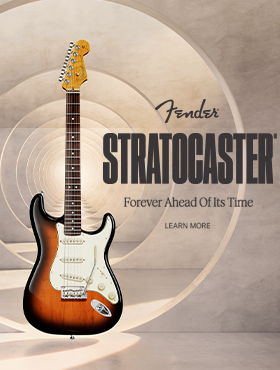 RADIO BIRDMAN-RADIOS RE-APPEAR!
RADIO BIRDMAN-RADIOS RE-APPEAR!
March 15, 2006 | Author: Joe Matera
It’s been a long time between drinks for Australian punk rock legends Radio Birdman. With a style that’s rooted in ‘60s Detroit garage rock ala The Stooges, instrumental surf music and the dirty and gritty attitude of The Stones, Radio Birdman released one EP and two groundbreaking studio albums in the form of Radios Appear and Living Eyes before imploding at the tail end of the 1970s. Renewed interest in the band saw the band reform around the turn of the 21st century, but it’s only now that the Birdman are finally releasing their much anticipated third album. Joe Matera reports
2005 saw You Am I’s Russell Hopkinson coming onboard and joining original Birdman members; Rob Younger, Deniz Tek, Chris Masuak and Pip Hoyle plus Jim Dickson, the band’s bassist since 2002. Hopkinson is the third drummer to enlist in Radio Birdman following Nik Reith’s six-show tenure and original drummer, Ron Keeley who retired from the band in 2004.With recording for the upcoming new and as yet untitled album finally wound up – the album was recorded at Big Jesus Burger studios in Sydney – Joe Matera spoke to Deniz Tek to give Australian Musician an exclusive preview on Radio Birdman’s latest and newest opus.
JM: What was the songwriting and recording process like for the new album?
DT: The actual process took about 12 days. The mixing was done about six weeks later as we like to listen to it with fresh ears. It would be a big mistake to just go in and mix it straight away after recording was done, as when you go back you sometimes hear a part here or there that might need to be redone. As for the songs, the very oldest song was written about five years ago and then there are songs written all the way up until the most recent one, which was written about six months ago.
We recorded all of the tracks to analog, to 2” inch, 24-track tape and then bounced it over to Pro Tools for editing and vocals. We self-funded the record and are putting out the record ourselves on our own label. We’ll have a distributor in Australia and a distributor for each territory overseas. At the moment there is no official title, we’re just calling it “The Album”. Some of the final track listing names are: Connected, Remorseless, We’ve Come So Far To Be Here Today, You Make It Worse, Zeno Beach, Hey Day and Found Dead. The theme is the usual death, lose, bad relationships and surf themes. There is even stuff about the apocalypse too!
JM: How did you approach this recording as opposed to the way you did your first two albums back in the ‘70s?
DT: We pretty much took the same approach as in the old days. We played all the songs through livefirst to get enough takes to get a good rhythm take, where the drums had the most kick and drum on each track. When we got one, that’s the one we kept. Then we rebuilt it from the drums on up from there. We kept the very best of all the drum tracks. Some of the other parts like guitars obviously some were good enough to keep and some weren’t but the drums were the primarily focus initially. The ones that weren’t we did all over again as you can’t expect all six guys to be hitting their peak all at the same moment.
JM: Tell us what gear you and Chris used for the recording?
DT: Chris used mainly his purple Stratocaster and his new red Firebird V. For some tracks he pulled out his clear plastic Dan Armstrong guitar. He played them through either a Marshall 100watt JMP or a Fender Bandmaster and at times a combination of the two with each amp mic-ed up. I played a number of guitars, my White Epiphone Crestwood (Tek’s trademark guitar that also appeared on Radios Appear), a 1964 Epiphone Coronet which was used a select few. The reason for this was that it turned out the P-90 pick-up on it was so noisy, and though it’s fantastic live where you don’t care about hum and noise, in the studio, it turned out to be annoying so I couldn’t use it all that much. I’ve also got this chopped Hamer that some guy has hacked and re-carved the body and put in three new mini DiMarzio pick-ups. I’m playing that guitar with heavy gauge strings and it had a real cranking sound so I used that for the heaviest tracks. I’ve also got a Robin Machete guitar on two tracks and a ’66 Firebird with two P-90s on another track.
Amp wise, I played almost everything through either my ‘70s 50watt Marshall MkII the one without the master volume and no gain-able pre-amp, which is the same amp I use live too. Or my ‘50’s Blackface Fender Vibrolux. And mostly no pedals. All though I have to add when Chris uses his Fender Strat because he needs to boost those pick-ups a little bit as they’re low output pick-ups, he uses a Boss EQ pedal as a gain device between the guitar and the amp. It doesn’t change the tone or adds any distortion, it just increases the output going into the front of the amp. He also has a boost pedal for some of his solos.
JM: What do think are the differences between the Radio Birdman of old and the new as displayed on the new album?
DT: I think it’s pretty much us; the engineer said it definitely sounds like Radio Birdman. Some of the songs sound like right where we left off before and some of them sound like a bit of a departure for us so there is the best of both worlds on there


